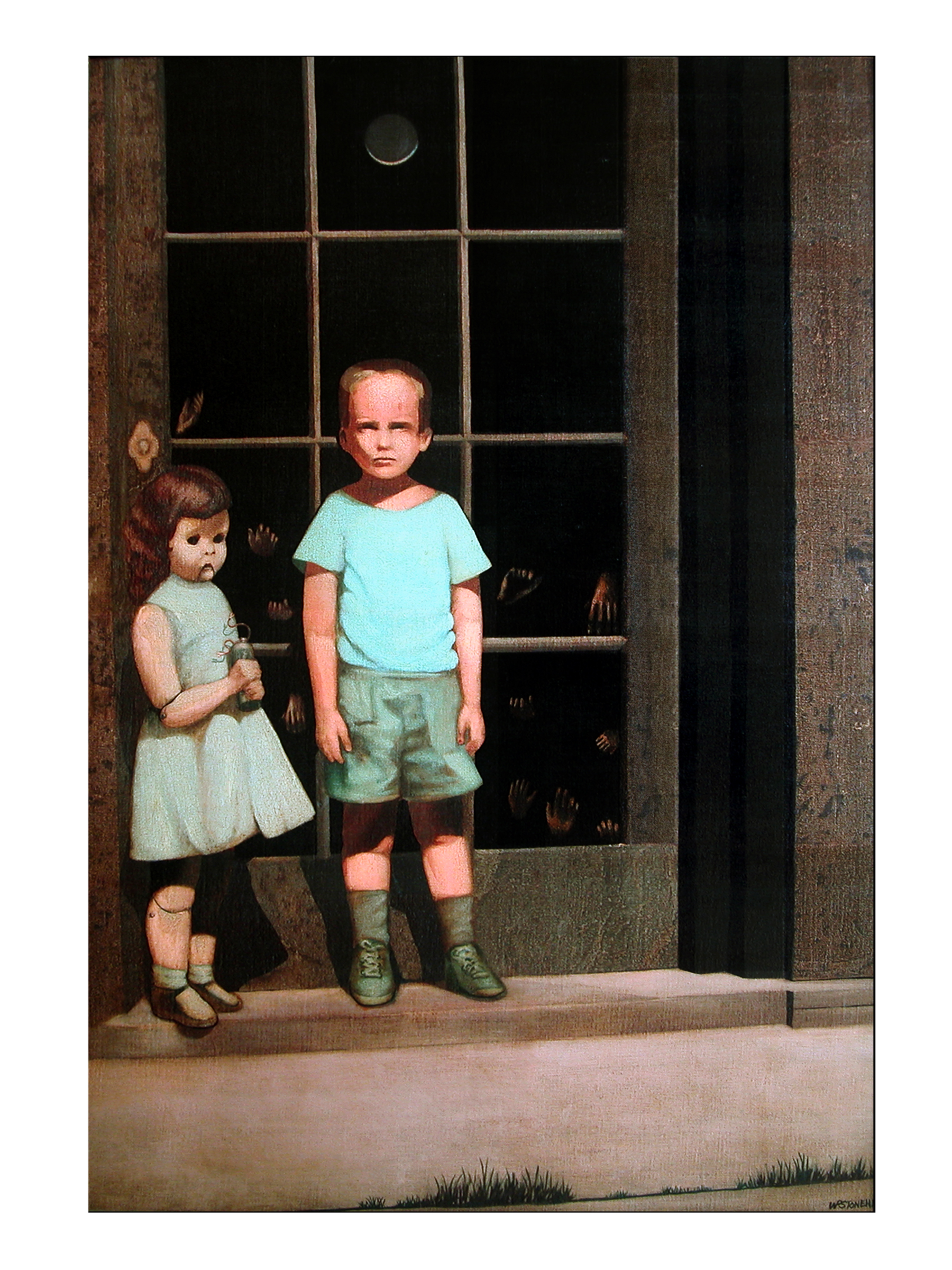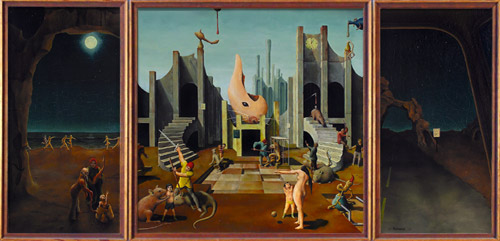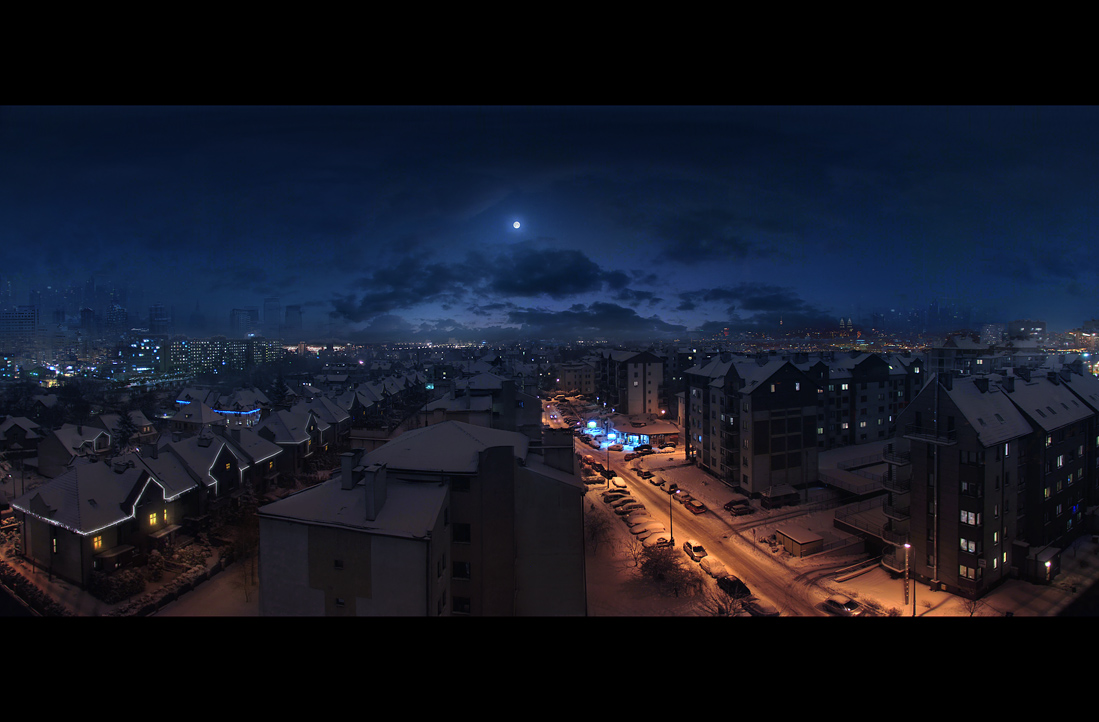 |
| Triptych, May-June 1973, 1973 |
Eventually, Dyer began to become a prolific subject in Bacon's work. These paintings initially were favorites of many critics, which gave Dyer more of a reason for being, and he gave up crime. However, as the popularity of these paintings began to dwindle, Dyer became bitter and turned to alcohol. Much of the rest of the relationship consisted of Bacon feeding Dyer's alcoholism. This led to them eventually splitting up.
Jump forward to October 1971, when Bacon asks Dyer to accompany him to Paris for a retrospective of his work at the Grand Palais, at a time when Bacon was being called Britain's "greatest living painter." Dyer, feeling very out of place in this world, made many attempts at commanding Bacon's attention, until finally, on the eve of the retrospective, he overdosed on barbiturates and died.
Bacon's grief at his former lover's death came out of him in the form of the Black Triptychs, which depicted Dyer at various points before, during, and after his death.
The most striking feature of this triptych is how immediate the emotional impact is. Even without all the backstory mentioned above, Bacon's style and formal choices very clearly express the emotions at play here.
The first formal item of note is the angle of each frame. It is a completely flat, wide angle. There is no glamor or beauty lavished on this disturbing display. The lighting has been spared similar gestures of grandeur; the lighting of the subject is very flat, much in keeping with what one might see in someone's home. The panels take a very voyeuristic approach to their presentation, forcing the viewer to sit, perhaps across the room, and watch this man crumble.
Bacon's expressionist style lends itself very effectively to depicting Dyer's twisted figure and matching mental state. What comes across in the painting is pure, raw emotion, taking the viewer inside the state of mind of this man, of whom Bacon had extensive, intimate knowledge.
One final element of note is the question of which direction this triptych is meant to be read. For my money, I would say right to left. Because of the way we learn to read (left-to right), we tend to follow images in much the same way. In film, for example, an effective way to elicit gasps from an audience is to have a character move from right to left across the frame. It disturbs our natural tendencies and pulls us out of our comfort zones. Since I felt this painting was doing that anyway, my interpretation is that it follows a right-to-left chronology. Aside from that it seems to make the most sense: Dyer is in a heap, vomiting into a sink (far right); he achieves a brief respite, wherein he sits and contemplates his situation, perhaps beginning to regret some of his choices, manifesting itself as the bat-like shadow cast upon the floor (center); finally, he moves himself to the toilet, crumpled like a piece of paper, however, having expelled some of his demons, he has taken on a slightly warmer hue (far left).
My Opinion
I find this piece simultaneously striking and deeply unsettling. The sheer range of emotions on display here cannot but affect me on a very deep level. Having known people with suicidal tendencies adds an extra dimension to this triptych for me; through Bacon's portrayal, I'm able to see in Dyer what I saw the beginnings of in them. For me that's the most effective part of the work; just how perfectly Bacon has managed to render this man in his most fragile state. Stunning, affecting, and deeply disturbing. This is my personal favorite of the Black triptychs, but the others are definitely worth checking out.
That's all for today, hope you enjoyed!










